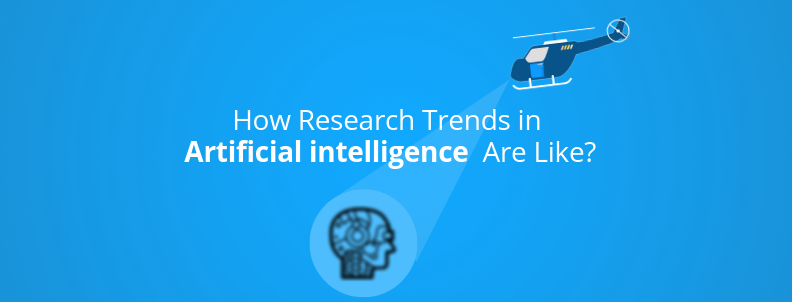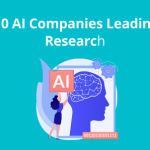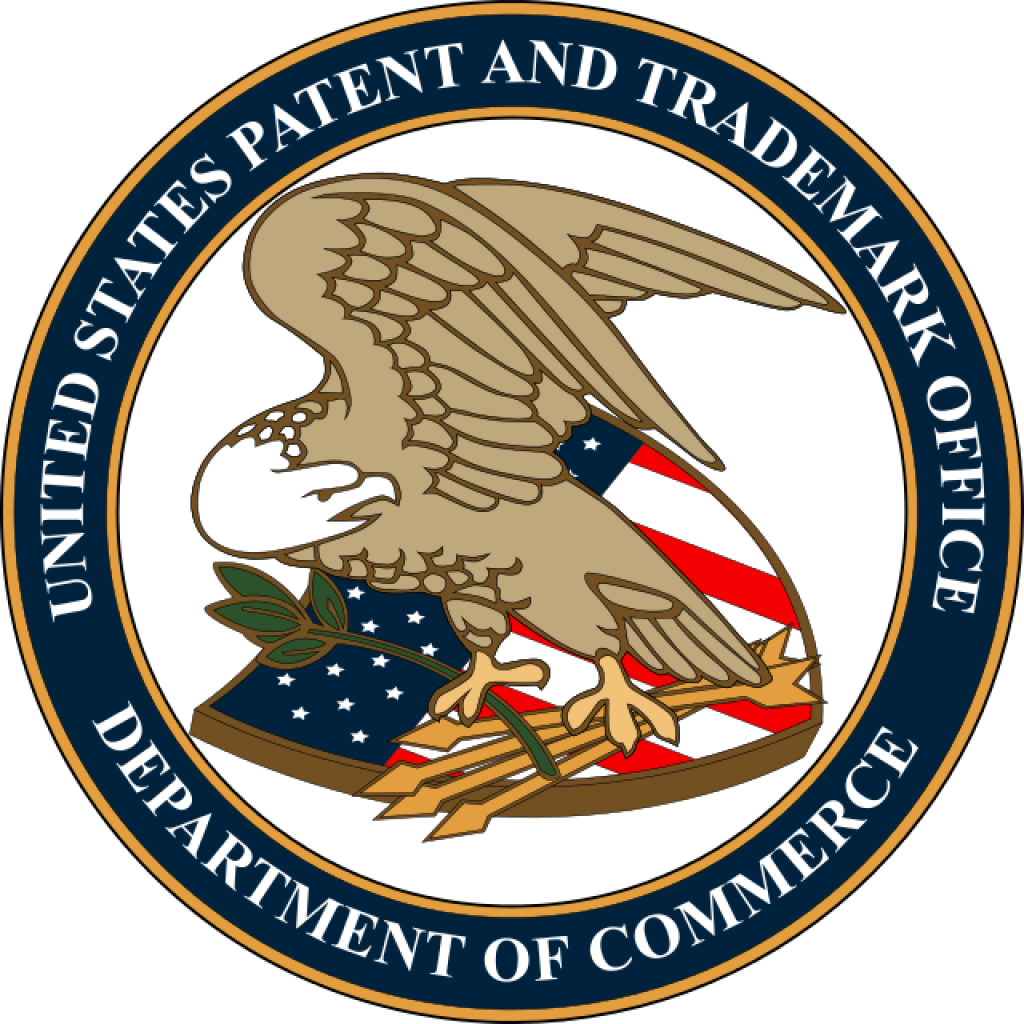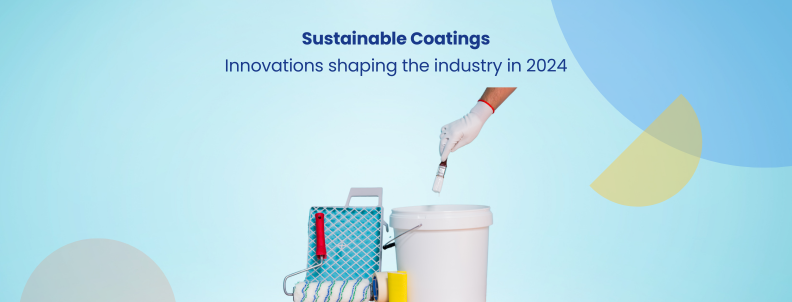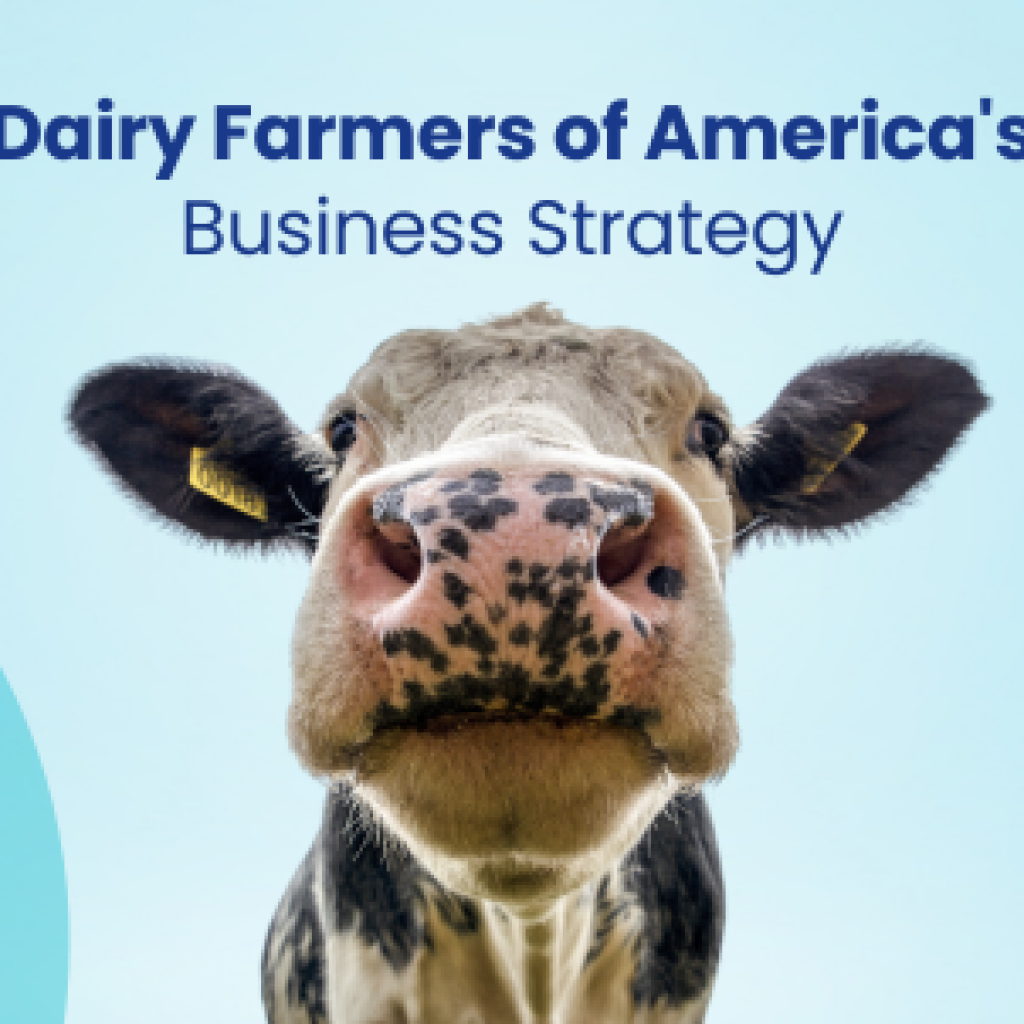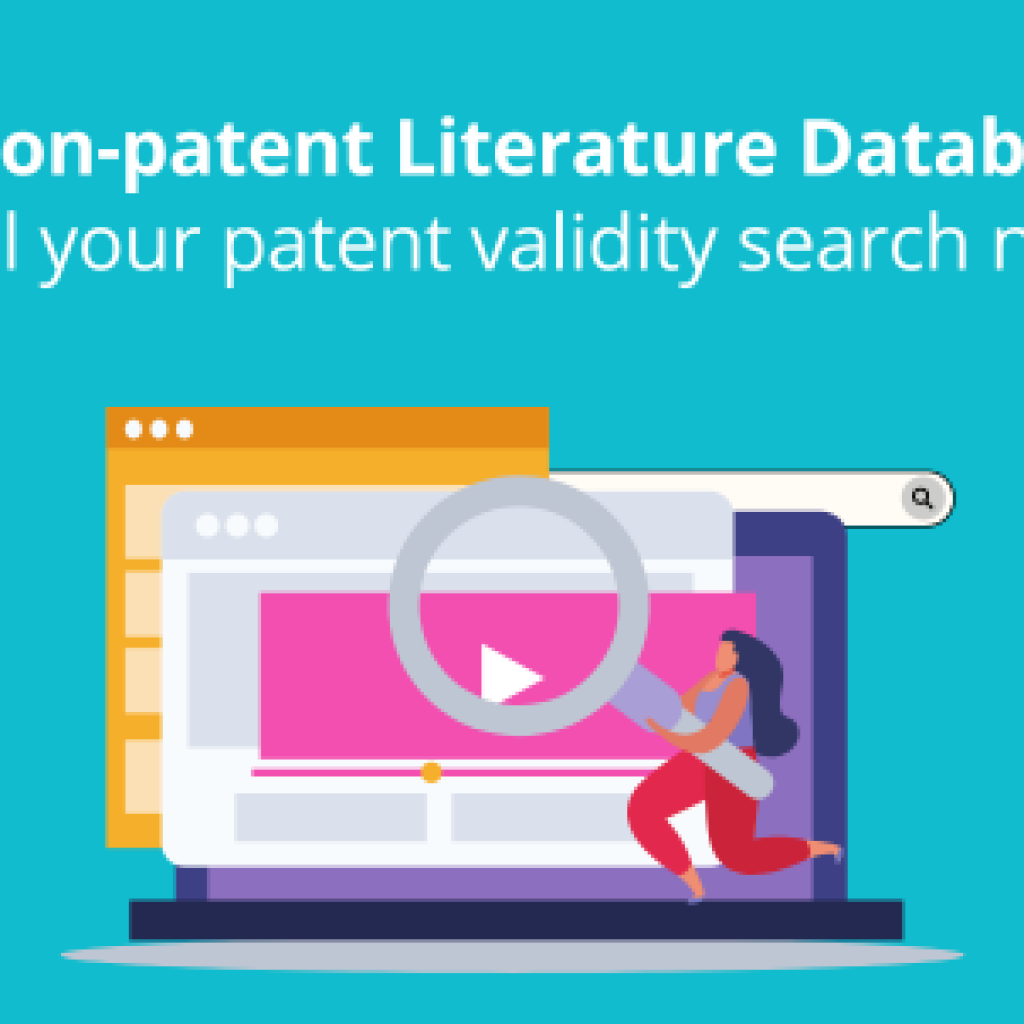In 2018, we witnessed a dramatic rise in AI-based platforms, tools, and applications.
One reason is that the big players from multiple domains like Google, Qualcomm, NVIDIA, Facebook, Microsoft, and IBM are investing in AI R&D to bridge the lab to the consumer gap.
Another reason for the growth in AI research is an increase in AI-based startup funding. In the second quarter of 2018, the funding to US-based AI startups rose by 21% to $2.3bn. These trends are expected to follow the upward trends in 2019 as well.
Why won’t technology see such trends when it is going to affect all the walks of our day-to-day life! From healthcare to automobiles, manufacturing to agriculture, in consumer electronics like fridges, AC to agriculture, it will take almost everything under its laps.
Because patents have such wide applications, including sectors like software, pharmaceuticals, and consumer electronics, where they play a big role, understanding patent filing trends will only help make sound business decisions.
We converted our research analysis into a downloadable PDF that includes Artificial Intelligence market insights, competitive analysis, and patent insights. You can download the pdf by filling out the form below:
Companies with the Most AI Patents
The chart below represents the leading companies filing patents in the USPTO for Artificial intelligence.
IBM, with 3007 patents, tops the list, followed by Microsoft and Google. Samsung is in the 4th position with 640 patents and the gap between the fourth player and the top three keeps widening as we move up.
These numbers also indicate the dominant position of the top three players in the US Artificial Intelligence market.
Some of the key highlights from the animated charts are as follows:
- Standing on the second pedestal for a long, IBM could finally overtake Microsoft in 2014 to be the top researcher then and continue for the years to come. In the same year, Samsung made it to the top 5, replacing Sony, who slid 2 steps down.
- In each year in the span of 2008-11, Google improved its rank one at a time — since then, it has showcased a constant research interest by maintaining its hold of the 3rd rank among the top researchers.
- Another constant in the Top 5 graph is Siemens. It seems to have been following a pattern. Till 2010, Siemens showcased a consistent patent filing intensity by holding the 3rd rank. Thereafter, it gave way to Google and then maintained its position at the 4th rank, till 2015. In the subsequent year, however, Siemens gave way to Samsung and slid down a step to rank 5 — being behind by a closer margin.
- Facebook, not surfacing at the top for almost the complete decade, popped up as one of the top 10 researchers only recently in 2016. Also, then, Intel rose a couple of steps to take rank 7. Further, in the same year, Qualcomm and Amazon were wiped out of the board; they had previously been making it up to the list in 2014 and 2015.
- The gap between the 1st, 2nd, and 3rd ranked players is huge. However, the gap between players ranked 3rd to 10th is very less – depicting competition for those places is very tight.
Let’s have a quick look at what the top players are working on:
IBM
IBM is one of the oldest companies researching Artificial Intelligence. Most of its work is on Watson (their AI-based platform for business applications), and providing AI as a service. One of the recent Watson-based services is Watson Assistant, an AI-powered chatbot for businesses.
Microsoft
Microsoft is investing a lot in the research of Artificial Intelligence. They have partnered with DJI (an industry-leading drone manufacturing company) for a drone-to-computer streaming project. Microsoft has also done a lot of acquisitions over the years to maintain an edge. Below are some of the M&A from the last year:
- In July 2018 Microsoft acquired Bonsai to reduce the barriers to AI development through the Bonsai team’s unique work combining machine teaching, reinforcement learning, and simulation.
- In September 2018 Microsoft acquired Lobe to help bring AI development capability to everyone.
- In May 2018 Microsoft acquired Semantic machines to solidify their approach to conversational AI.
In November 2015 Google launched Tensor flow which is an end-to-end open-source platform for machine learning. Google is also all in for acquiring AI-based startups, with their acquisition count going highest in 2015. To name a few, Google acquired deep mind technologies in 2014 for 500 million. Other names that joined Google’s acquisition list are Dark Blue Labs, Vision Factory, Granata, Timeful, Emu, Jetpac, and many more.
“In the long run we are evolving from a ‘mobile first’ to an ‘AI-first’ world in the computer industry.”
– Sundar Pichai
Google’s place on patent filings charts highlights the same commitment.
Samsung
In November 2018 Samsung joined Partnership on Artificial Intelligence to Benefit People and Society (PAI), a consortium of 70+ organizations working on the betterment of AI and its applications.
Evidently, a lot of Samsung’s efforts in this space are related to their own personal assistant Bixby. In March last year, Samsung acquired Kngine, an AI startup working on an AI engine to power customer service, voice interface, and driving enterprise research.
Siemens
In April 2019, Siemens partnered with SAS to add new capabilities to its cloud-based IoT operating system MindSphere. To strengthen its already strong presence in the AI domain, Siemens also has taken the acquisition path.
In August 2018, Siemens acquired Mendix, a cloud platform for low-code and AI-assisted app delivery, for $730 million in cash, to accelerate their R&D in AI technology. Almost a year ago before this acquisition, in November 2017 Siemens bought Solido design automation, which is a Canadian provider of variation-aware design and characterization software to the semiconductor industry.
AI Research over the last decade in the US
Which Sub-Tech Areas Are Popular across US R&D Departments?
Artificial Intelligence is an umbrella term that has multiple sub-tech areas. The chart below represents the patent filing trends for sub-tech areas under Artificial Intelligence Systems:
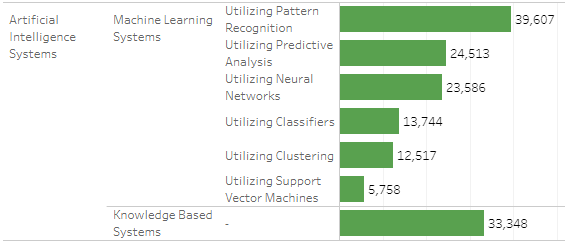
From 2010 to 2018, patent filing activities in the knowledge-based system could be divided into two parts:
- The rise – from 2010 to 2015
- The flat- from 2015 to 2018 (why flat?)
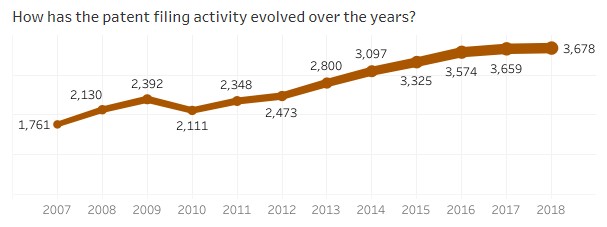
Top patent holders in Knowledge-based AI systems
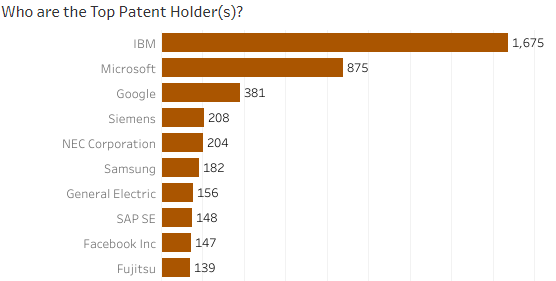
Pattern recognition, predictive analysis, and utilizing neural networks are the top three sub-parts of Machine Learning based AI systems that received maximum attention from researchers. A total of 67,282 patents are filed in Machine Learning based AI systems.
An overview of patent filing trends and top players is as follows:
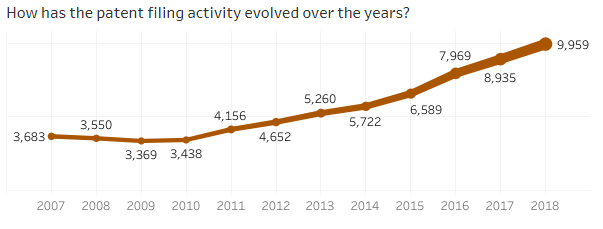
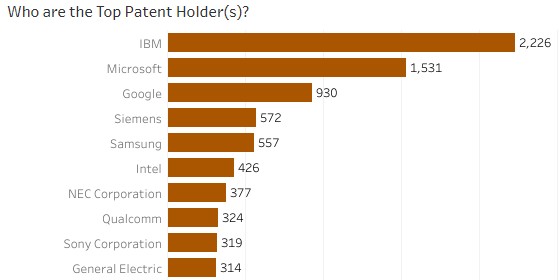
Which AI-Based Application Areas Are Popular across US R&D Departments?
The table below represents the patent filing in various areas where AI has an application. Computer vision, entertainment, robotics, and health care received the highest number of patent filings among others.
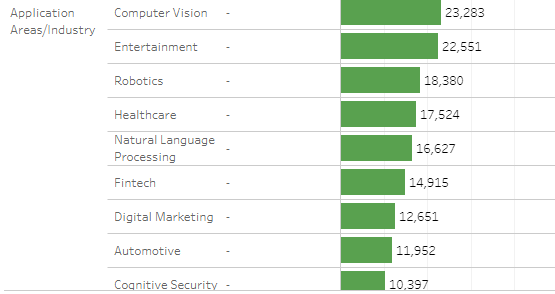
Research activities in Computer Vision have been increasing since 2010. IBM, Microsoft, Siemens, and Google respectively are the top four patent filers. On the other hand, research activities in AI-based entertainment have been decreasing since 2015. The number of patents filed per year dropped from 2424 in 2015 to 2092 in 2018.
In 2018, patent filings in natural language processing witnessed a 4.5x increase in a patent filed per year from 2010. IBM with 1185 patents is way ahead of Microsoft (491 patents) and Google (267 patents).
In Robotics, patent filings have been continuously increasing since 2010. It doubled in 2018 to 2115 from 1045 in 2010. Microsoft, IBM, and Google are the top three patent filers with 366, 316, and 173 patents respectively.
In Healthcare (17,524 patents), the patent filing has been continuously increasing since 2010. Siemens (390 patents) is the top patent filer followed by IBM with 292 patents and Philips with 182 patents. Microsoft, Samsung, and Intel are in the 5th, 6th, and 11th positions.
In AI-based Digital Marketing, a total of 12,651 patents are filed. From 2011 to 2017, the patent filing fluctuated between the range of 1110 to 1200 patents per year. In 2018, it fell to 1057 patents from 1175 in 2017. IBM, Microsoft, Google, and FB respectively are the top four patent filers with 235, 222, 138, and 103 patents.
Across all the application areas of AI, a total of 74,500 patents are filed. The charts below represent what trend patent filing witnessed over the year, and which players emerged as the top patent filers.
Patent filing trends in AI-based application areas
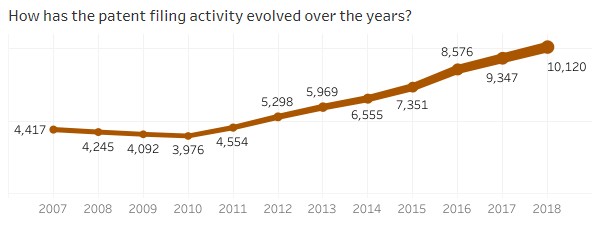
Top Patent Filers in AI-based application areas

Overview of Foreign Players Active in the US AI Market
The chart below depicts the interest of foreign players in the US AI market over the last decade. From the patent filing trends, we can see a growing interest in other countries in the US AI market.
This means that US players will be facing tough competition, especially from their European counterparts.
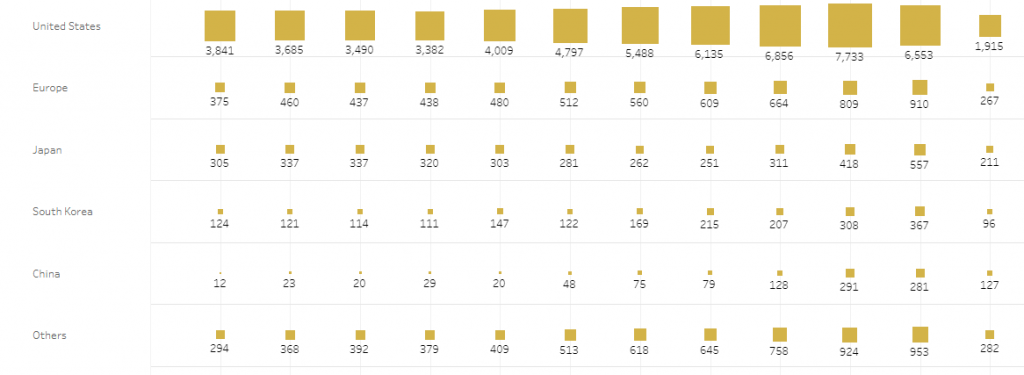
Want deeper insights on research in Artificial Intelligence?
In case you need more insights on Artificial Intelligence, feel free to send us a message here:
Authored By: Nitin Balodi, Team Lead, Market Research.

